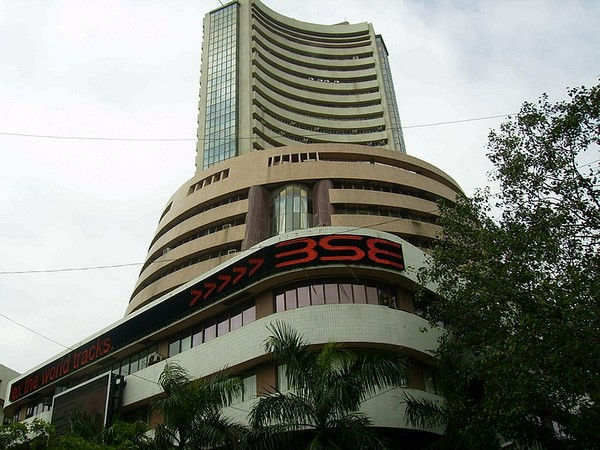The stock markets went into a bear grip on Monday as bad news from the COVID-19 infection surge and local lockdowns impacting growth spooked investors. The number of daily infections has breached the one lakh mark and several state governments have already announced severe local restrictions. Maharashtra has imposed a weekend lockdown as well as strict restrictions on weekdays – closure of private offices and non-essential shops, restrictions on public transport, and other curbs. The Nifty, as well as the BSE Sensex, opened lower, dragged by selling in almost every segment – banks, FMCG, auto %u2013 except IT. And heavy selling was seen in most counters later in the day. Investors dumped bank stocks on worries over a possible increase in bad debts since the economic recovery has been patchy till now and the fresh COVID-19 surge could worsen matters.
Also Read | PVR, Inox Leisure shares hit hard by Maharashtra closing cinema halls
A Mumbai-based brokerage has said that in 2021-22, two things will drive the markets: the pace of vaccination and corporate earnings. %u201CGiven the recent resurgence in Covid-19 cases, the pace of vaccination will assume crucial importance. Expeditious containment of Covid19 cases and accelerated pace of vaccination will provide comfort for FY22 economic growth recovery. Secondly, the expectations for FY22 earnings are running high at 30%+ growth in Nifty FY22E EPS. Given the rich valuations, any misses on FY22 earnings delivery may act as dampener,%u201D this brokerage said. Analysts have also pointed out that better-than-expected US jobs data and signs of an economic recovery in that country are the two positive factors, which could limit the downside.
Also Read | Sensex falls 1,100 points: Which stocks were the top losers
Here are some factors which will impact the markets in the coming days:
Economy: India%u2019s economic recovery had been sharp till the December quarter on a record low base but it has again become uneven. Analysts at another Mumbai-based brokerage noted that IIP growth (which tracks factory output) in the unlocking phase (September 2020 %u2013 January 2021) averaged at mere 0.6% – in other words, it remained flat. Export growth has also lagged that of other emerging market peers %u2013 India%u2019s exports fell by 13% during April-January while EM exports grew 1% in the same period. How else has economic recovery been uneven? %u201CBetween April-December 2020, while Gross Value Add (EBITDA + wages) of listed companies grew ~6.5%, India%u2019s overall non-agri GVA fell 11.6%, indicating larger companies are gaining market share and rationalizing costs,%u201D this brokerage pointed out. Meanwhile, the credit growth is yet to show any visible traction despite rising input costs/working capital and this may impact the outlook on bank stocks. So all said and done, outside of the agriculture sector, economic recovery has not been uniform and the current quarter (April-June 2021) could return flat GDP growth again. All in all, concerns over the economy would be playing on the minds of investors going forward.
Also Read | COVID-19 spike, restrictions denting investor confidence, says expert on market crash
Monetary Policy, Earnings: In the forthcoming monetary policy meeting on April 07, 2021, most analysts expect the Reserve Bank of India (RBI) to leave interest rates unchanged and stick to its accommodative stance. So the MPC meeting is unlikely to swing markets majorly. So the next major event for the markets would be the start of the earnings season from next week. IT bigwigs such as Infosys and TCS are scheduled to declare their results next week, many other companies have also scheduled their earnings announcements through this month. The IT sector is widely expected to post a good set of numbers and this could trigger some upswing in the markets. Analysts expect robust results by IT majors due to the highest-ever order books, substantial revenue acceleration, robust margins, and strong outlook. Ditto for the Fast Moving Consumer Goods (FMCG) segment, which has been on the upswing for much of the pandemic period. As we said earlier, financial stocks %u2013 particularly banks %u2013 may witness selling pressure on weakening economic prospects.
Volatility: In January, the markets touched record highs (the Sensex crossed the 50,000 mark on January 21 for the first time ever) due to massive buying across almost all sectors. At that time, analysts had said that markets were expected to remain high due to anticipated better-than-expected earnings season, the rollout of the vaccination drive (which had started on January 16), and the first advance estimates of economic growth projecting a contraction of just 7.7% (as opposed to a deeper contraction seen earlier) in the country%u2019s GDP in 2020-21. Also, as analysts at HDFC Mutual Fund had noted, the appreciation in most asset classes was driven by lower cost of capital and high liquidity. High liquidity, of course, came from the central bank, in a coordinated policy move to tackle the pandemic along with stimulus packages from the Centre.
Now that the markets are witnessing selling pressure, it is pertinent to reiterate here what the RBI had said during the bull run: the central bank had referred to a %u201Cgrowing disconnect%u201D between financial markets and real sector activity and %u201Csoaring valuations%u201D which are disconnected with economic performance. In other words, the record highs that the bourses were witnessing did not reflect the performance of either the economy or a wide swathe of India Inc. Investors need to be cautious.
#Sensex #Nifty #Markets #NSE #BSE #Business #StockMarket #ShareMarket







